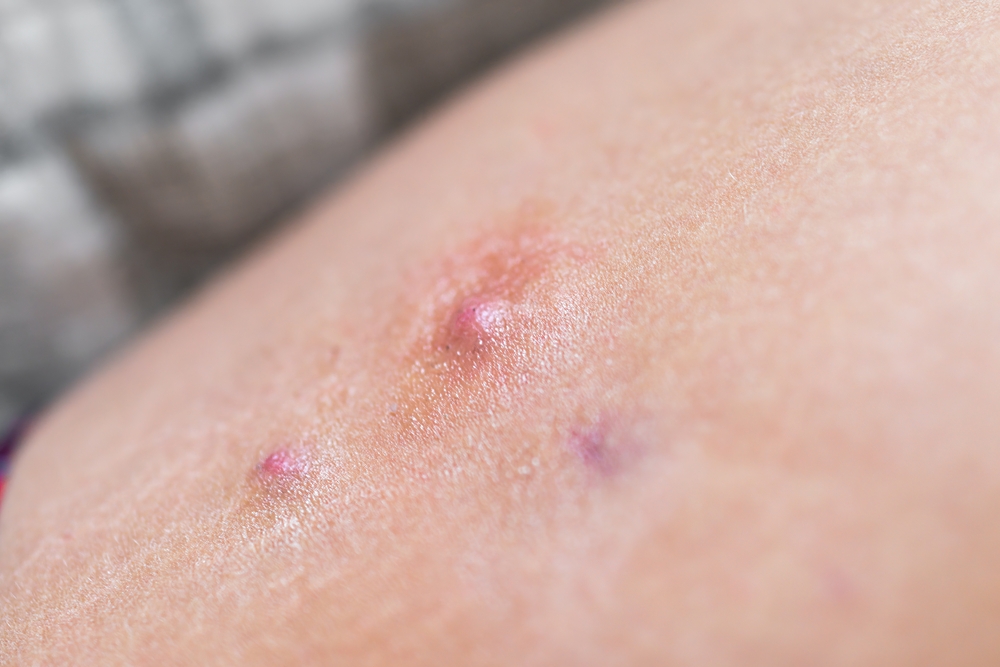Adults with moderate to severe hidradenitis suppurativa (HS) who had previously failed anti-TNF therapy showed higher response rates in Hidradenitis Suppurativa Clinical Response 50 (HiSCR) at week 16 when treated with lutikizumab (ABT-981) 300 mg every other week or 300 mg compared to patients who received placebo, according to results from a new Phase 2 study.
Lutikizumab is AbbVie’s investigational, dual-variable-domain interleukin (IL) 1α/1β antagonist. Studies have shown IL 1α and 1β are elevated in HS lesions.
“These results are encouraging and help us further understand the use of lutikizumab in patients with HS as we work to address the need for additional treatment options for patients living with this disease,” says study author Alexa B. Kimball, MD, MPH, a professor of Dermatology at Harvard Medical School and the President and CEO of Harvard Medical Faculty Physicians at Beth Israel Deaconess Medical Center in Boston, in a news release.
Based on these data, AbbVie will advance its clinical program of lutikizumab in HS to Phase 3.
This study was a 16-week, Phase 2, randomized, double-blind, parallel group, placebo controlled, dose-ranging, multicenter study that evaluated the safety and efficacy of lutikizumab in 153 adult patients with moderate to severe HS who had previously failed anti-TNF therapy. Most patients (70.6%) had severe baseline Hurley Stage 3 disease – the most extensive form of HS – characterized by scarring, lesions and sinus tracts.
Patients were randomized at baseline to receive one of three subcutaneous doses of lutikizumab (100 mg every other week, 300 mg every other week, or 300 mg every week) or placebo. The study’s primary endpoint was an achievement of HiSCR 50 at week 16, and the secondary endpoint was skin pain NRS30 at week 16 among subjects with baseline NRS≥3.
In addition to achieving higher response rates in the primary endpoint and despite most patients having severe disease, the trial also showed patients receiving lutikizumab 300 mg weekly and 300 mg every other week achieved higher rates of improved skin pain via NRS30 and HiSCR75, a higher threshold of HS clinical response, compared to placebo. Lutikizumab 100 mg every other week did not show greater efficacy compared to placebo.
| Endpoints(All at Week 16) | Response (%) | Response (%); Treatment Diff vs. PBO# P-value+1 | |||
| PBO(N=40) | Luti 100 mg EOW(N=37) | Luti 300mg EOW(N=37) | Luti 300mg EW(N=39) | ||
| Primary | HiSCR 50 | 35.0 | 27.0∆: -9.7 p=0.345 | 59.5∆: 24.1 p=0.027 | 48.7∆: 13.8 p=0.197 |
| Secondary | Skin Pain NRS30* | N=3112.9 | N=2722.2∆: 9.4 p=0.330 | N=2934.5∆: 21.8 p=0.039 | N=2334.8∆: 19.8 p=0.066 |
| Additional | HiSCR 75 | 17.5 | 16.2∆: -2.2 p=0.795 | 45.9∆: 28.2 p=0.005 | 38.5∆: 21.0 p=0.031 |
+All p values are nominal
*Analyzed among patients with baseline Skin Pain NRS≥3
All doses were generally well-tolerated. The percentage of subjects with treatment-emergent adverse events (TEAE) were generally similar across combined lutikizumab treatment arms (70.8%) and placebo (75.0%) with the most common being HS (10.6%), diarrhea (8.8%), headache (8.8%), pruritus (6.2%), contact dermatitis (5.3%), eczema (5.3%), and nasopharyngitis (5.3%) in the combined lutikizumab treatment group. Serious adverse events (SAEs) occurred in 5.3% of the combined lutikizumab treatment group and in 2.5% in the placebo group. There were no deaths, no events of neutropenia reported, and no Grade 3 or 4 laboratory evaluations of neutropenia observed. Throughout the study, one event of serious infection (infected stoma) was reported in lutikizumab 300 mg every other week, with no associated neutropenia, deemed by the investigator as having no reasonable possibility of being related to study drug. There was one instance of T-cell lymphoma (lutikizumab 300 mg every week) reported in a patient with pre-existing risk factors, including HS and ongoing cigarette smoking. There were no dose-dependent trends in any TEAEs, SAEs, infections, or serious infections.
HiSCR 50 at week 16, the primary endpoint of this study, is a measure that represents patients who achieve at least a 50% reduction at week 16 in the total abscess and inflammatory nodule (AN) count with no increase in abscess count and no increase in draining fistula count relative to baseline. Similarly, HiSCR 75 represents the achievement of at least a 75% reduction in AN count at week 16 with no increase in draining fistula count relative to baseline. The secondary endpoint, NRS30 at week 16, defines the achievement of at least a 30% reduction and at least 1-unit reduction from baseline in NRS (Numeric Rating Scale) at week 16 as assessed by patient global assessment for skin pain, among subjects with baseline NRS≥3.
These data will be presented at a future medical congress.


